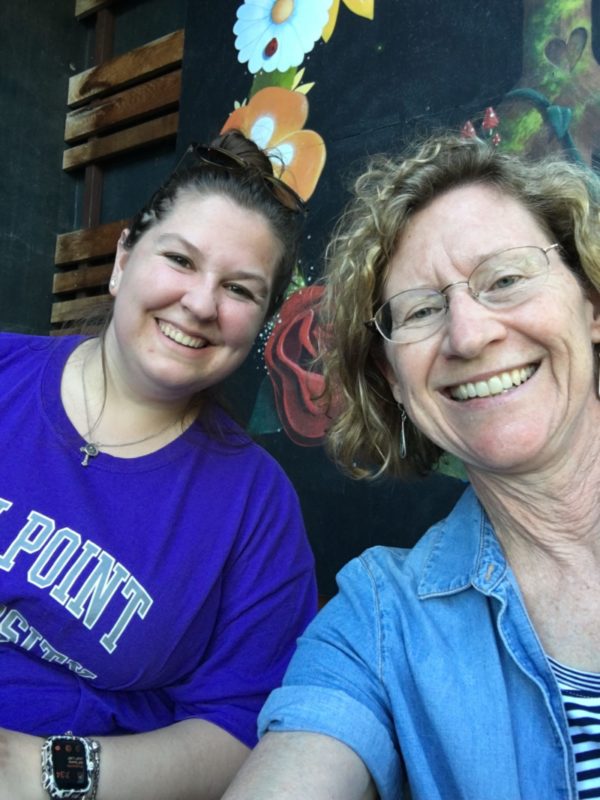Multisensory Math: The Golden Nugget For Students With Learning Differences
An Interview with Toni DeFiglia by Noble Academy Administrators
As we enter Dyslexia, ADHD, and Learning Differences Awareness Month, Lower School Teachers Hannah Adelman and Toni DeFiglia spent an entire week this past summer focused on professional development in Multisensory Math (MSM). You may have heard about multisensory approaches to reading and writing. Well, the multisensory approach and the benefit of it to students with learning differences can be part of a math curriculum as well.
The Multisensory Math Approach
The Multisensory Math Approach is the brainchild of Marilyn Zecher, MA, CALT. She developed the program from “an outgrowth of an effort to apply strategies from evidence based reading instruction to conceptionally based mathematics instruction.”* Zecher incorporates the principles of the Orton-Gillingham Approach, which gave these two Lower School math teachers pause to listen.
 We know the impact the Wilson Reading SystemⓇ, another multisensory research based reading program, has made with our reading students. It is exciting to know these teachers will be acquiring knowledge to make those same leaps in math. The focus of MSM is to take any curriculum and incorporate sensory input using the research based approach Concrete-Representational-Abstract (CRA). CRA lays the foundation for a student, with or without learning differences, to develop basic number sense and make math concepts memorable.*
We know the impact the Wilson Reading SystemⓇ, another multisensory research based reading program, has made with our reading students. It is exciting to know these teachers will be acquiring knowledge to make those same leaps in math. The focus of MSM is to take any curriculum and incorporate sensory input using the research based approach Concrete-Representational-Abstract (CRA). CRA lays the foundation for a student, with or without learning differences, to develop basic number sense and make math concepts memorable.*
The Big MSM “AHA” Moment
Just as our students learn vocabulary in literature based classes like science and social studies, math has a language and vocabulary set of its own. Students need to be able to understand what these words mean before they can attack a problem. MSM provides math language, concepts, and lesson planning across grade levels. You may have heard the term differentiation associated with teaching students of different learning types and styles who may be working at different levels. Adelman and DeFiglia’s big MSM “aha” moment was to glean that a lesson doesn’t need to be tailored to each of the learners in front of them. When you use MSM processes, you are embracing the idea that learning takes place using all senses. Each student will have their needs met when they are able to attack math through multiple modalities.
In Adelman and DeFiglia’s training, all roads began with manipulatives: beads, strings, Base 10 blocks, unicubes, dice, dominoes, craft sticks, and much more. The list is never ending and gives students hands-on learning for 3D concrete models. They began their exploration using Base 10 blocks to solidify the idea of 10. The mantra was cube, rod, flat. Regardless of how small or big they got…and they got big! The MSM mentors took the group outdoors to complete a large scale model with rope. MSM is the perfect modeling for all students. But for students with learning differences, it is a gold nugget that is necessary.
 Creating Multi-Dimensional Models
Creating Multi-Dimensional Models
Students move from 3D concrete models to representational drawings and online manipulatives. The jump for the student is easy because they have the actual concrete model available to create a drawing. These paper 2D models can be anything that can adhere flat to paper. These include stickers, soft foam, string, craft pipes, ribbon. All of these help develop vocabulary reference pages for each concept. These pages provide creative examples to be used throughout the year and move to the next grade level. When teaching math, students move from the concrete to the representational, and finally the abstract. It is the representational to the abstract where the understanding often breaks down. This is because it uses symbols, words, and numbers to represent math concepts. The use of abstract must be a slow deliberate connection to representational models.
As teachers-turned-students, Adelman and DeFiglia were reminded that afternoons can be tough no matter how excited or engaged they are with the concepts. Just like their students, they needed to stretch their senses and brains with auditory/movements. One of the MSM instructors impressed upon them how important using gross motor movements can be to connect their brain with opposing concepts. These include fractions numerator/denominator, different operations, number sequencing, or math words.
Introducing MSM Into the Classrooms
Adelman and DeFiglia are thrilled to incorporate Zecher’s MSM ideas into their classrooms. As teachers it is so easy to get stuck in a routine implementing concepts using paper/pencil. This was particularly true with the pandemic having limited student-to-student access. Adelman and DeFiglia’s focus this year will be to share their knowledge with their colleagues, as well as use MSM to develop powerful mathematicians. The administration at Noble is confident they will succeed!
 To learn more about Noble Academy or to schedule a tour, visit nobleknights.org or their Facebook and Instagram pages.
To learn more about Noble Academy or to schedule a tour, visit nobleknights.org or their Facebook and Instagram pages.
*(Zecher, Marilyn. “Multisensory Math.” http://www.multisensorymath.com/.Accessed 19 September 2022.)
Sponsored by Noble Academy
